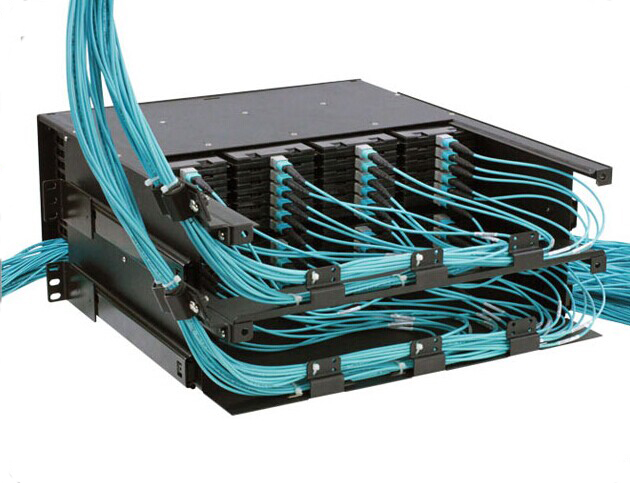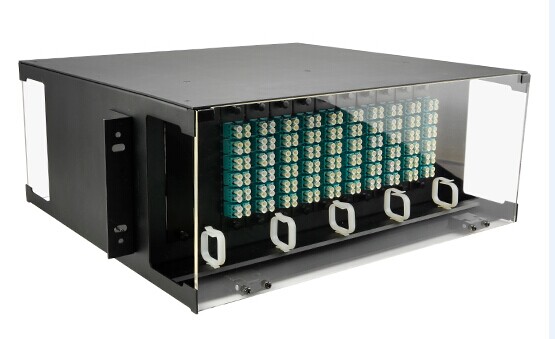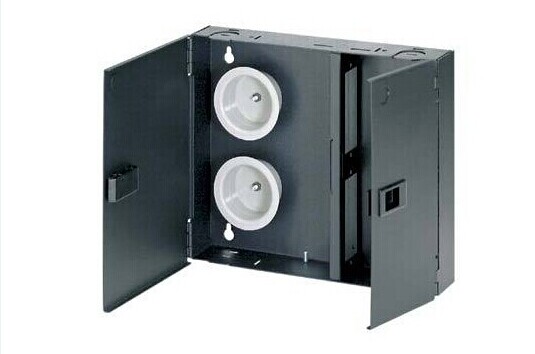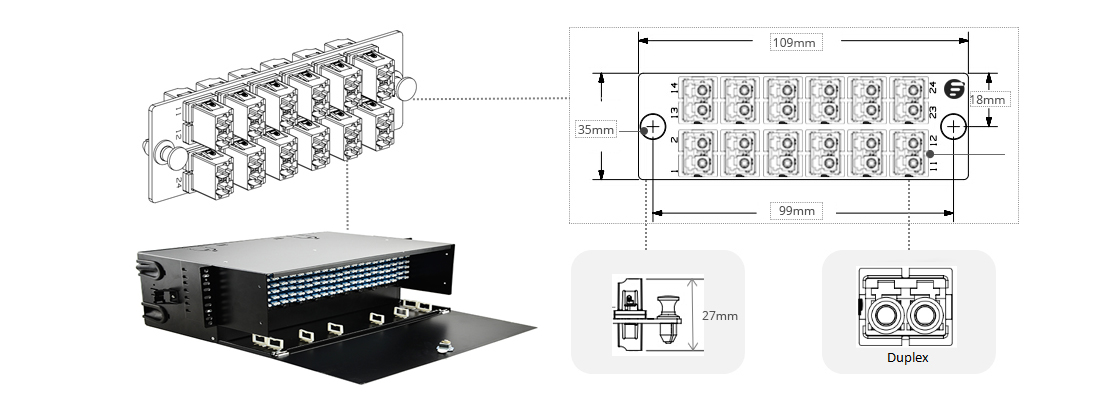Basic Knowledge of Fiber Optic Patch Panel
Fiber optic cable has been increasingly applied to meet the need of high speed network. In data centers, the cabling infrastructure turns to be more complicated. Under that situation, keeping good cable management is necessary since messy cabling will cause fiber optic loss and not easy for troubleshooting. Then fiber optic patch panels can serve as the tools for cabling systems.

A fiber optic patch panel is also called fiber distribution panel. It’s used to terminate the fiber optic cable and provide connection to individual spliced fibers. Besides, fiber patch panels can create a secure environment for exposed fibers, housing connectors and splice unites.
Fiber patch panels can be divided into two types. Both types can house, organize, manage and protect fiber optic cable, splices and connectors.
One is rack mount panel. Usually the rack mount panel holds the fibers horizontally and looks like a drawer. Rack mount panel is designed in 1U, 2U, 4U sizes and can hold up to 288 or even more fibers. The rack mount enclosures include two kinds. One is the slide-out variety and the other incorporates a removable lid. The sliding design of panels gives engineer easy access to the fibers inside but it’s more expensive. The lid type is less expensive but requires the user to remove the whole enclosure from the rack to gain internal access.

The other is wall mount panel. While wall mount panel is designed for enclosed wall mounting of adapter panels or splice trays. They are fabricated from steel sheets and finished with a light textured black powder coat. These panels can be easily mounted to any wall using the internal mounting holes. They can protect fibers from dust or debris contamination and organize the cables.

A typical fiber patch panel contains four parts: enclosed chamber (rack mount or wall mount), adapter panels, connector adapters (providing low optical loss connection through mating appropriate connectors) and splice tray (organizing and securing splice modules). Adapters on a fiber patch panel are available in different shapes, such as LC, SC, MTP, etc. Most times, all adapters are of the same type in a panel. But sometimes a panel with different types of adapters is needed when more than one type of fiber optic connectors used in a network.
Fiber patch panel has two compartments. One contains the bulkhead receptacles or adapters, and the other is used for splice tray and excess fiber storage. Patch cable management trays are optional for some patch panels and make possible the neat storage of excessive patch cable lengths.
Fiber patch panel ports provide a place for data to enter and exit the panel. The number of these ports vary from 12, 24, 48, 64, 72, 96 to 288 and even more. Actually there is no limit to the number of ports on a patch panel. As long as there is enough room, you can fill the enclosure without interfering with the integrity.
FS.COM offers a 288 fibers 4RU rack mount fiber optic enclosure, loaded with 12 slots duplex fiber adapter panels. This high density patch panel provides a flexible and modular systems for managing fiber terminations, connections, and patching in all applications. With its high fiber densities and port counts, it maximizes rack space utilization and minimizes floor space. This enclosure makes it easy for network deployment, moves, adds, and changes. It’s a perfect solution for engineers to do the fiber termination and distribution.

In a patch panel, pigtail or field termination can be used for the connection. If it uses the pigtail approach, a splice tray is needed in the patch panel. This method provide the best quality connection and is usually the quickest. The second method uses fiber optic connector for field termination. A fiber optic connector is directly installed onto the individual fibers. This method usually takes longer time than pigtail but doesn’t need a splice tray in the patch panel. However, the connection quality may not be as good as pre-terminated pigtails.
Fiber patch panels are very useful especially in the high density data center. They feature with the benefits of easy fiber installation, maximum flexibility and manageability. Although patch panels are attractive, it’s the best only when it fits your application. No matter rack mount or wall mount type, loaded or unloaded, you should better choose the most suitable one based on your own situation.
Originally published at www.fiber-optic-equipment.com
Comments